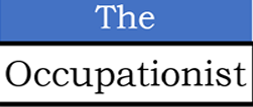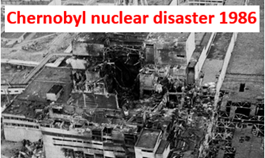Incorrect ergonomics or its absence not only causes aches and pains (musculoskeletal disorders) but can also cause industrial disasters, including a nuclear accident.
A scientific paper by VM Munipov (1992) emphasized that unless the ergonomics lessons are fully learned, a similar disaster like the Chernobyl nuclear accident could still occur.
Chernobyl nuclear disaster happened in 1986 in erstwhile USSR; now Ukraine. The blame for the 1986 Chernobyl disaster has been attributed to many factors; design of the nuclear reactor (or ergonomics) being one of them. The other factors being the operating personnel, the plant management, and the lack of adequate safety information in the Soviet nuclear industry.
The paper by VM Munipov considered a number of design faults in the nuclear reactor, operational shortcomings and human errors that in combination led to the accident.
Ergonomics aspects were considered by Munipov and it was his view that the main cause of the accident was inadequate human-machine interaction.
Human-machine interaction (HMI) is about how people and automated systems (devices, equipment) interact with each other. HMI has changed since 1986.
Munipov’s research is supported by Kim Vicente, Professor of Ergonomics, University of Toronto who argues that the Chernobyl nuclear disaster is attributable to plant design that did not pay sufficient attention to human factors. “The operators were trained but the complexity of the reactor and the control panels nevertheless outstripped their ability to grasp what they were seeing [during the prelude to the disaster],” said Vincente.
Basic ergonomics may be established in simple operations in the industry (example, offices) by the OH physician. When operations become complex, a professional ergonomist is necessary to have an efficient ergonomics.
Human factors and ergonomics (commonly referred to as human factors) is the application of psychological and physiological principles to the engineering and design of products, processes, and systems. It aims to reduce human error, increase productivity, and enhance safety and comfort with a specific focus on the interaction between the human and the device or equipment.
In the absence of an ergonomist, basic ergonomics may be established in simple operations in the industry (example, offices) by the Occupational Health (OH) physician. When operations become complex, a professional ergonomist is necessary to have an efficient HMI.
It must be remembered while designing jobs that an uncomfortable worker is an inefficient worker. If optimization of work is to be achieved, then weightage must be given to make the worker comfortable; and fundamentally ergonomics is all about that. This is achieved through the evaluation and design of workplaces, environments, job tasks, equipment, and processes in relationship to human capabilities and interactions in the workplace.
Also called as Human Factors Engineering, it is successfully applied in the fields of aerospace, healthcare, IT, product design, transportation, training, nuclear reactors, among others.
Ignoring to establish ergonomics in operations, big or small, can lead to aches and pains in employees to disasters like Chernobyl affecting communities with serious effects in multiple locations. Inputs from OH physician can help mitigate risks to health in an individual, groups of individuals or communities.
The Chernobyl nuclear disaster illustrated how ergonomics can even help in preventing major industrial disasters, and the role of an ergonomist and an OH physician in averting them.
To know more about ergonomics, contact
_________________________________________________________________________________________________________
Dr Ajay Sati is an Occupational Health physician who prefers to describe himself as an Occupationist, to denote, ‘an expert in diseases and other concerns of occupations’. Dr Sati has managed health and wellness programs in industries he worked, like the atomic energy, and energy (oil & gas) in India and overseas. He was involved in many greenfield and brownfield projects providing inputs from health point of view. Known for SOPs and protocols, he is currently involved with an energy MNC in designing protocols to support employees during the covid pandemic, and protocols to safely reopen offices and plants.



